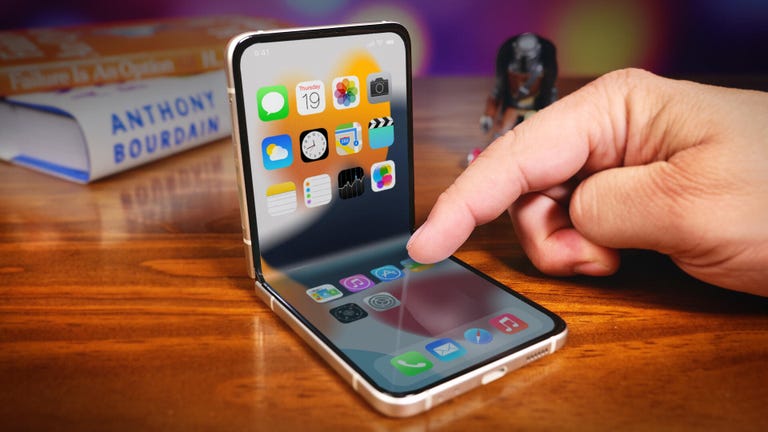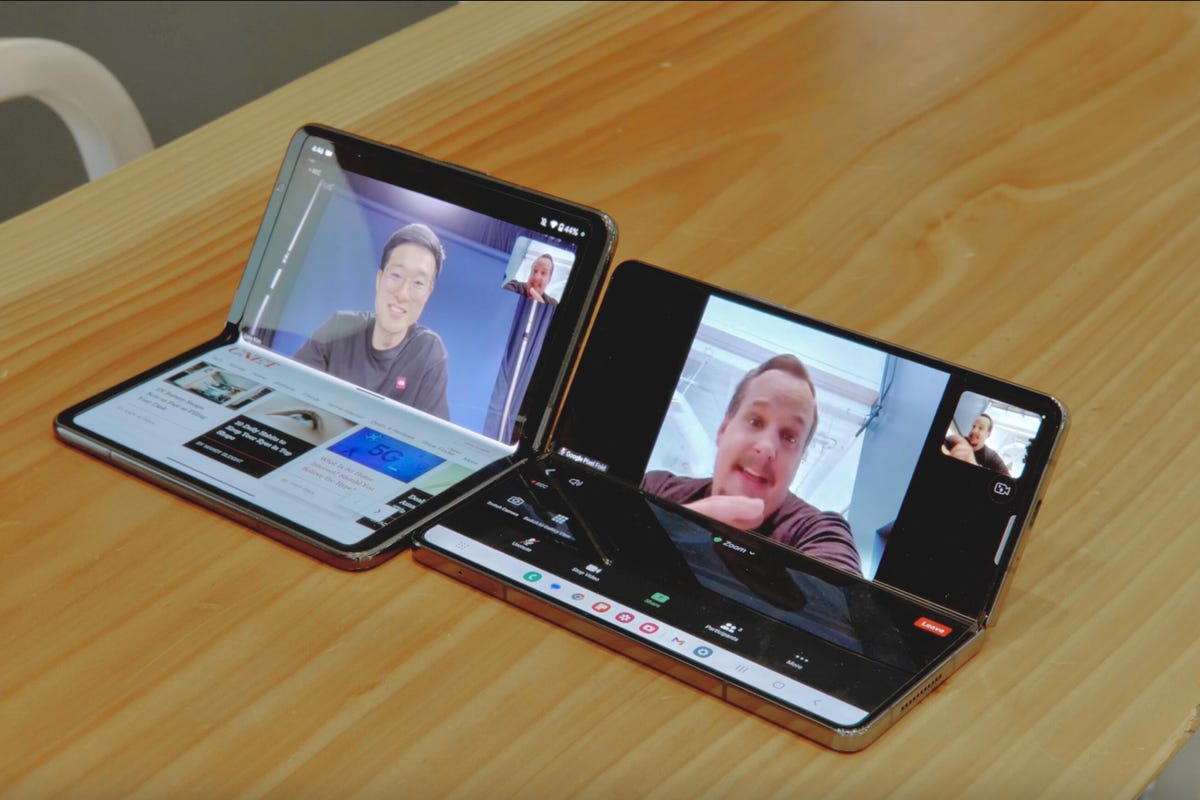Apple’s foldable iPhone has been rumored for years and while it was conspicuous by its absence during September’s iPhone 16 launch event, it’s likely Apple will want to get in on the folding game at some point in the future. But having tested and reviewed foldable phones since Samsung launched its first Z Fold back in 2019, I have some thoughts — and words of caution — for Apple as it gets closer to potentially unveiling the iPhone Flip.
I’ve written before about why foldable phones have disappointed me and how Apple could be the company to give the category a boost. Because it really needs one. Recently we’ve seen new foldables from Samsung, Motorola and Xiaomi, and none of them have managed to get me especially excited, with all companies’ new launches just being iterations of what they already had.
Foldables are decent on the surface, but beyond the novelty of the bending display, they don’t offer anything unique. With more Android companies joining the folding fray, the more concerned I’ve become that Apple could run into the same problem of the iPhone Flip being a generic, redundant novelty.

Watch this: When Is the iPhone Flip Going to Come Out?
A foldable iPhone needs to be more than just a regular iPhone 15 with a screen that can bend.
Here’s what Apple needs to do.
Focus on software
Unfortunately, the foldable Android devices we’ve seen so far — including the new Samsung Galaxy Z Fold 6 and Z Flip 6 — are essentially just regular Android phones with flexible displays. The hardware is impressive, sure, but once you get over the novelty of a phone that bends in half it just becomes like any other phone. Except one you’ve paid a huge amount of money for.
The problem is that while the folding hardware works well, the software is basically the same that you’d find on the non-folding versions of the phones. There are few adjustments for the larger displays in the core Android software and most third-party apps don’t really take advantage of the format. As a result, I’m still waiting for that “oh wow” moment that makes me see the true value of a folding phone.

The hardware on Samsung’s Z Fold 6 has certainly evolved since the first Z Fold, but the software remains pretty underwhelming.
I had hoped that Google, as the maker of Android, would develop more software features that would make full use of the folding format with its Pixel Fold range, but even two generations in Google’s devices feels more like an exercise in keeping pace with the competition rather than a genuine attempt to innovate.
Apple’s deep developer relationships will hopefully play right into its hands here, with productivity, entertainment and gaming app producers likely poised and ready to create killer apps that show why foldable phones truly are the next step in our phone’s evolution.
Stand out from the crowd
Even on the hardware side of things we’re already seeing duplication in designs and form factors. Motorola’s new Razr Plus is essentially the same as Samsung’s Z Flip 6 and there’s little to choose between the OnePlus Open, Google Pixel Fold and Galaxy Z Fold 6 beyond a few minor touches.

Most of the foldables we’ve seen so far tend to look alike.
Apple needs to avoid a folding iPhone that just looks like a clone of existing Android foldables. It needs to stand out and reinforce why Apple is the champion when it comes to product engineering. Let’s not forget that Apple didn’t invent the mobile phone, but its top-class designers and engineers created a product with the first iPhone that completely revolutionized what a phone could be.
Apple has time on its side here; by being late to the party and not rushing in with a “me too!” product, it’s been able to see the progression of foldables from Samsung’s first Z Fold, through to the more advanced models we have today. It’s given the company an opportunity to bide its time and learn from others’ mistakes and hopefully put that same spark that made the original iPhone so transformative into its first foldable.
Don’t skimp on the specs — and then do
A folding iPhone, if we ever get one, should be the showcase for what Apple can achieve with a phone. It needs to not just be cutting edge in terms of its design but also be packed with the latest, greatest tech the company has to offer elsewhere. That means it needs to be able to keep pace with the Pro models, not be a cut-down version that just happens to fold.

The Galaxy Z Flip 6 is a nice bit of kit, but its hardware doesn’t compete with Samsung’s regular phones.
We’ve seen this with many other foldables, including Samsung, which typically packs its folding phones — especially the Z Flip line — with lesser specs than you’d get from its top-end S Ultra models. The result is that you’re forced to pay top dollar for the bendable phone but still end up with lesser performance than your friend who has a much cheaper phone than you.
It’s especially true with the cameras, with even Samsung’s most expensive Z Fold 6 packing a camera setup that doesn’t compete with the S24 Ultra. So you’re left having to decide between the best camera performance or the best folding tech. Either way, you’re having to make a compromise.
An Apple foldable needs to pack the same triple camera setup from the Pro line, along with ProRaw imaging and ProRes video capture. It needs to have the latest processor capable of handling anything you’ll throw at it and it needs to be able to run Apple’s new AI skills (Apple Intelligence) at least as well as any other phone the company makes.

Until we get a real folding iPhone, we’ll have to make do with my awful Photoshopped version.
Such a device will cost a fortune, so Apple also needs a more affordable option that’s aimed more towards those who simply want the fun of the hinge without all the bells and whistles. Why? Because it needs mass market appeal to get developers on board. A hyper-expensive elite iPhone Fold will have too few adopters early on, and so why would developers waste time dreaming up and producing apps for so few potential customers? On the other hand, just going for the cheap and fun model will make it seem like a toy. A gimmick that gets some headlines but isn’t really for serious users.
To truly dominate the market with developers on board, Apple will need to tackle both sides of the value equation.




















+ There are no comments
Add yours